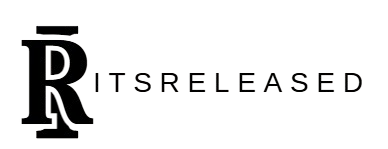Jawline surgery has become one of the most requested cosmetic and reconstructive procedures in recent years, reflecting a growing interest in facial definition, symmetry, and overall balance. Within the first glance at a person’s face, the jawline plays a crucial role in shaping impressions of strength, youth, and proportion. People searching for information on jawline surgery often want clear answers: what exactly does the surgery involve, what kinds of results are realistic, how much does it cost, and what are the recovery steps? In the simplest terms, jawline surgery refers to surgical procedures that alter the bone structure, contours, or alignment of the jaw to achieve a more refined, balanced, or functional result. It can include cosmetic enhancements, corrective jaw surgery for medical reasons, or reconstruction after trauma.
In today’s medical landscape, jawline surgery is no longer limited to drastic interventions. With advancements in surgical planning, 3D imaging, and minimally invasive techniques, patients now have options tailored to their specific goals. Whether it’s a subtle contour improvement or a full corrective orthognathic procedure, jawline surgery stands at the intersection of art and science. A sharper, balanced jawline is not just an aesthetic pursuit; in many cases, it contributes to better oral health, improved bite function, and enhanced confidence. This article explores the subject in full detail: types of jawline surgery, candidate suitability, techniques, risks, recovery expectations, costs, cultural significance, and the psychological impact. By the end, readers will gain a full understanding of what jawline surgery entails, enabling them to make informed decisions about whether it may be the right choice.
Understanding Jawline Surgery
Jawline surgery refers to a broad category of procedures targeting the lower third of the face. The goal is either functional—correcting bite alignment or jaw irregularities—or cosmetic, designed to enhance facial contours. In medical terms, this type of surgery falls under orthognathic (jaw-correcting) procedures, maxillofacial surgery, or cosmetic contouring. For patients, however, it is often simplified as “reshaping the jawline.”
A strong or defined jawline is associated with youth and vitality, but not everyone has naturally balanced proportions. Jawline surgery can reduce overly prominent angles, add definition to softer contours, or correct asymmetry caused by genetics or injury. Surgeons use advanced imaging tools to map facial proportions before surgery, ensuring results align with both function and appearance. “The jawline defines the face like a frame defines a painting,” says one reconstructive surgeon, emphasizing its structural importance.
Types of Jawline Surgery
Jawline surgery is not one single operation but a collection of approaches. Each type targets specific concerns: bone size, angle shape, asymmetry, or proportional balance. The table below outlines common types and their purposes.
| Type of Surgery | Primary Purpose | Common Candidates | Expected Results |
|---|---|---|---|
| Jaw Reduction (Mandibular Contouring) | Slims wide or square jaws | Patients with broad angles | Softer, oval-shaped jawline |
| Jawline Augmentation (Implants or Bone Advancement) | Enhances weak chin or jawline | Patients with recessed chins | Stronger, more defined profile |
| Orthognathic Surgery | Corrects functional misalignment | Patients with bite problems | Improved bite, facial harmony |
| Jaw Reconstruction | Restores symmetry after trauma | Accident or surgery patients | Balanced and natural appearance |
| Double Jaw Surgery | Corrects severe skeletal issues | Patients with misaligned jaws | Functional and cosmetic improvement |
Each procedure carries its own surgical technique, healing time, and impact on overall facial appearance. Some involve bone reshaping through controlled reduction, while others use implants or grafts to build definition. Increasingly, surgeons blend surgical precision with aesthetic artistry to ensure that the jawline complements the rest of the face naturally.
Candidate Suitability
Not everyone seeking jawline surgery is an ideal candidate. Eligibility depends on health, expectations, and the type of procedure required. For cosmetic procedures, candidates usually seek greater facial balance and definition. For corrective procedures, medical necessity drives the decision. Surgeons conduct thorough evaluations that include imaging scans, medical history, and bite analysis.
Good candidates generally share the following traits: overall good health, non-smokers, stable dental condition, and realistic expectations. Patients with chronic conditions or poor bone health may face higher risks. Emotional readiness also matters; individuals must understand that surgery may bring improvements but not perfection. “Cosmetic surgery succeeds best when patients aim for harmony, not drastic change,” notes a facial surgeon specializing in jaw procedures.
The Surgical Process
Jawline surgery begins with consultation and planning. Surgeons use 3D modeling to demonstrate potential results. On the day of surgery, general anesthesia is typically required. For bone-based procedures, incisions are often made inside the mouth to avoid external scars. The surgeon reshapes or repositions the jawbone using specialized instruments. In augmentation, implants made of silicone or porous polyethylene may be inserted and secured.
Most surgeries last two to five hours, depending on complexity. Afterward, patients spend several hours under observation and may require overnight hospital stay for major corrective operations. Swelling, bruising, and tightness are common post-operative sensations. Pain management and antibiotics form part of the recovery protocol, alongside dietary adjustments to soft foods during initial healing.
Risks and Considerations
Every surgical procedure carries inherent risks, and jawline surgery is no exception. Common risks include infection, bleeding, nerve damage, asymmetry, or dissatisfaction with results. More severe risks, although rare, involve improper bone healing or implant rejection. A balanced perspective is critical; while complications are possible, skilled surgeons mitigate risks through precise planning and careful post-operative monitoring.
Patients are advised to weigh potential benefits against risks. Communication is essential—patients should voice concerns about scarring, recovery timelines, or possible side effects. Regular follow-up appointments ensure any emerging issues are quickly managed. One experienced patient put it succinctly: “The recovery is tough, but if you trust your surgeon and follow instructions, the results can be life-changing.”
Recovery and Aftercare
Recovery timelines vary based on the surgery performed. Most patients experience swelling and bruising for one to two weeks, with gradual reduction over a month. Complete bone healing may take six months or longer for complex corrective procedures. Eating soft foods, avoiding strenuous activity, and maintaining oral hygiene are critical during early recovery.
Surgeons often prescribe pain relievers, antibiotics, and antiseptic rinses. Regular check-ups track healing progress and allow for early intervention if complications arise. Psychological adjustment is also a part of recovery—patients may initially struggle with swelling or altered appearance before final results stabilize. In most cases, satisfaction grows as the jawline settles into its new shape over time.
Cost of Jawline Surgery
The cost of jawline surgery varies significantly depending on type, complexity, and location. Cosmetic contouring is usually less expensive than corrective orthognathic surgery. Insurance rarely covers cosmetic procedures but may cover medically necessary corrections.
| Type of Procedure | Average Cost Range | Insurance Coverage |
|---|---|---|
| Jaw Reduction | $7,000 – $15,000 | Not covered |
| Jawline Augmentation | $6,000 – $12,000 | Not covered |
| Orthognathic Surgery | $20,000 – $40,000 | Often covered |
| Jaw Reconstruction | $15,000 – $30,000 | Sometimes covered |
| Double Jaw Surgery | $25,000 – $50,000 | Partially covered |
These figures represent general ranges and may differ widely across regions. Costs also include hospital fees, surgeon’s expertise, anesthesia, and follow-up care. Patients are encouraged to budget for both the surgery and recovery expenses, such as time off work and supportive therapies.
Psychological and Cultural Perspectives
Beyond physical transformation, jawline surgery carries psychological and cultural significance. In many societies, a defined jawline symbolizes strength, attractiveness, and authority. This perception fuels demand, especially among younger generations influenced by digital culture, where facial angles are scrutinized on social media.
Psychological benefits include enhanced self-esteem and improved confidence in professional and social interactions. However, there are also cautions about relying solely on surgery for self-worth. Experts emphasize mental preparation and realistic expectations. “Surgery can refine your face, but confidence comes from within,” remarks a counselor who works with cosmetic patients.
Cultural ideals also influence trends. In some regions, a softer, oval-shaped jawline is prized, while in others, angular strength is celebrated. Jawline surgery adapts to these aesthetic ideals, reflecting the diversity of beauty standards worldwide.
Innovations in Jawline Surgery
Technological advancements have revolutionized jawline surgery. 3D imaging and virtual surgical planning allow surgeons to simulate outcomes before operations. Minimally invasive tools reduce scarring and shorten recovery time. Some procedures combine surgical precision with non-surgical enhancements like dermal fillers, creating hybrid approaches tailored to patient goals.
Robotics and computer-guided instruments now assist in bone reshaping, increasing accuracy and safety. Bio-compatible materials for implants continue to improve, reducing rejection risks. These innovations make jawline surgery more accessible, predictable, and patient-friendly. In the future, regenerative medicine may even allow for bone tissue engineering, opening new possibilities in reconstructive facial surgery.
Conclusion
Jawline surgery is more than an aesthetic choice; it is a medical and cultural phenomenon reflecting evolving ideas of beauty, health, and identity. For some, it offers functional correction of long-standing issues; for others, it provides a boost in confidence and facial balance. The decision to undergo jawline surgery should be made carefully, weighing the benefits, risks, and long-term expectations. With advanced techniques and improved patient education, the procedure continues to grow in popularity and safety.
Ultimately, the jawline defines not just the face but also the way individuals perceive themselves and are perceived by others. As one patient summarized: “I didn’t just change my jawline, I changed the way I carry myself.” By understanding every aspect—from types and costs to cultural significance—readers are equipped with the knowledge to approach jawline surgery thoughtfully and responsibly.
FAQs
Q1: How long does jawline surgery recovery take?
Recovery takes one to two weeks for swelling reduction, with full bone healing in six to twelve months.
Q2: Is jawline surgery painful?
Pain is manageable with prescribed medication, though swelling and tightness are common during the first recovery weeks.
Q3: Can jawline surgery change my smile?
Yes, corrective jaw surgeries can influence bite and smile, but cosmetic contouring has minimal impact on dental expression.
Q4: Are results permanent?
Results are generally permanent, though aging and lifestyle factors may slightly alter appearance over time.
Q5: Can I combine jawline surgery with other procedures?
Yes, many patients combine it with chin augmentation, rhinoplasty, or fillers for a balanced, comprehensive result.











